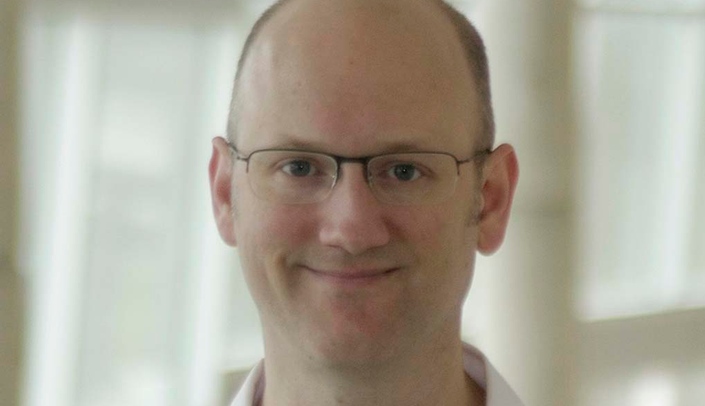A $3 million grant to researchers at the University of Nebraska at Omaha (UNO) and the University of Nebraska Medical Center (UNMC) will fund research and development behind a new generation of stent-graft device that could help prevent issues later in life for patients with aortic disease and trauma.
Anastasia Desyatova, Ph.D., assistant professor within UNO’s Department of Biomechanics (pictured), received a Research Project Grant (R01) from the National Institutes of Health (NIH) for the project. R01s are the largest individual grants awarded by the NIH to fund individual research projects.
Desyatova collaborates with Jason MacTaggart, M.D., associate professor in UNMC’s Department of Surgery; Alexey Kamenskiy, Ph.D., professor within UNO’s Department of Biomechanics; and Kaspars Maleckis, Ph.D., assistant professor within UNO’s Department of Biomechanics.
The goal of Desyatova’s research team is to study the effectiveness of a new generation of stent-graft devices that they developed. These experimental devices are made of an elastic material flexible enough to closely mimic the mechanics of a healthy aorta.
Traditional stent-grafts are generally thought to work well in the aorta but are stiff and do not distend and recoil like the aorta itself. This rigidity can impose additional stress on the heart which, over time, can lead to its thickening and stiffening. These long-term effects are important in young trauma patients treated with stent-grafts because of their long life expectancies, but they may be even more important in older patients with other aortic pathologies and diminished baseline cardiac function.
"By constructing a stent-graft device that functions similarly to a young healthy aorta, our research aims to reduce or mitigate the negative side effects that conventional stiff stent-grafts have on the heart and the aorta," Desyatova said. "This new device could have a substantial impact on the long-term well-being of patients living with an injured or diseased aorta."
The research will be conducted at UNO’s Biomechanics Research Building and in the Department of Surgery at UNMC. The Biomechanics Research Building is home to cutting-edge Center for Research in Human Movement Variability (MOVCENTR), the Center for Biomechanics Research in Nebraska, and the Nebraska Biomechanics Core Facility.
Significant portions of the project will be performed by Jason MacTaggart, M.D., a vascular surgeon-scientist at UNMC who is a long-term collaborator of Desyatova. "We greatly appreciate the support of the Department of Surgery at UNMC", says Desyatova. "It is critical to have partnering clinicians because they have first-hand knowledge of the device requirements."
Desyatova’s team also partners with Live On Nebraska who helps them understand the mechanical characteristics of young human aortas that guide device design.
"Without the support of tissue donors and their families, this work would not have been possible," said Desyatova. "Studying human arteries is the only way to understand how we need to design the device. We cannot thank them enough for their generous donation that would help millions of patients with aortic disease."
Research reported in this news release is supported by the National Heart, Lung, and Blood Institute of the National Institutes of Health under Award Number R01HL147128. The content is solely the responsibility of the authors and does not necessarily represent the official views of the National Institutes of Health
